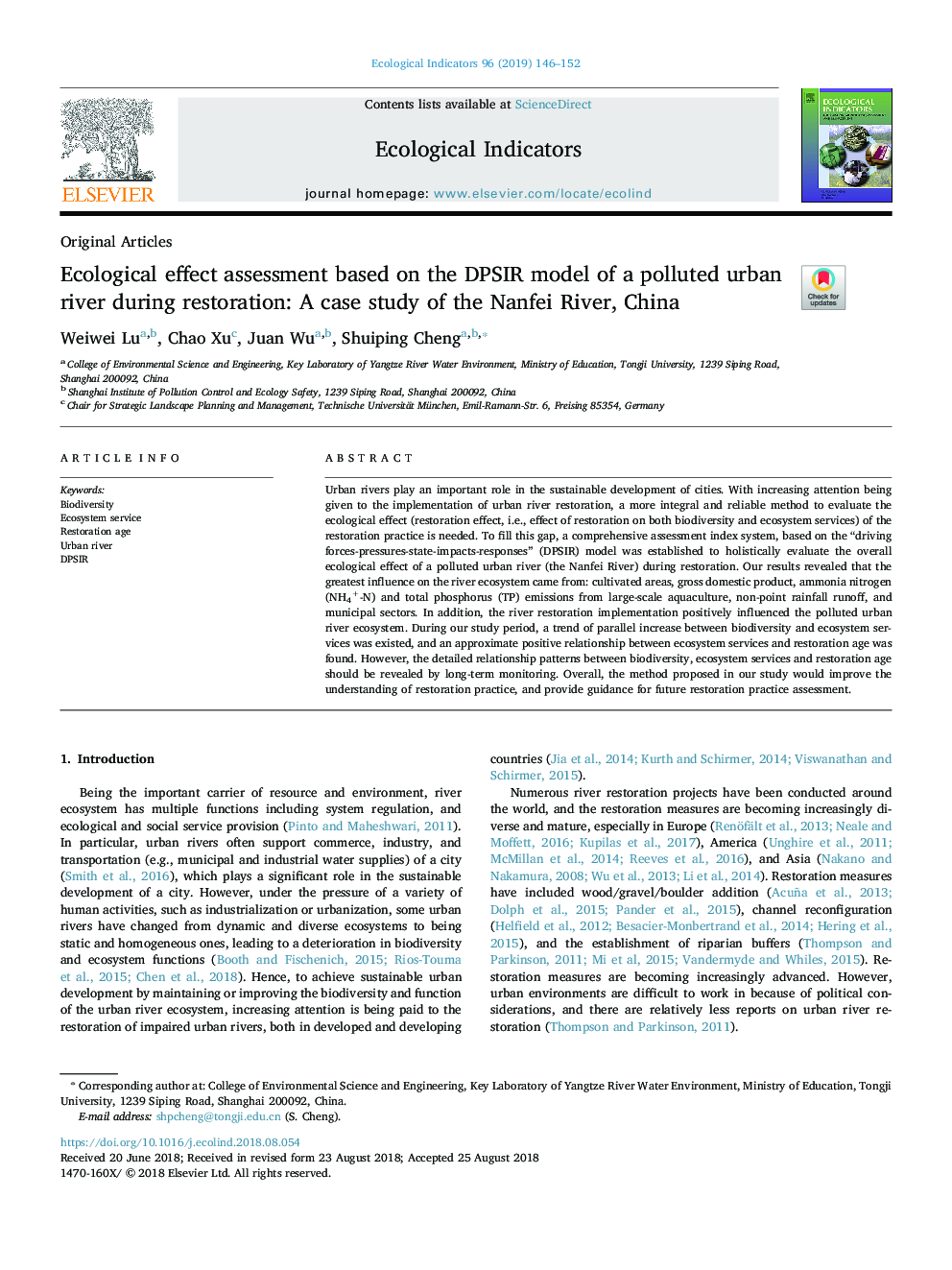| Article ID | Journal | Published Year | Pages | File Type |
|---|---|---|---|---|
| 10144202 | Ecological Indicators | 2019 | 7 Pages |
Abstract
Urban rivers play an important role in the sustainable development of cities. With increasing attention being given to the implementation of urban river restoration, a more integral and reliable method to evaluate the ecological effect (restoration effect, i.e., effect of restoration on both biodiversity and ecosystem services) of the restoration practice is needed. To fill this gap, a comprehensive assessment index system, based on the “driving forces-pressures-state-impacts-responses” (DPSIR) model was established to holistically evaluate the overall ecological effect of a polluted urban river (the Nanfei River) during restoration. Our results revealed that the greatest influence on the river ecosystem came from: cultivated areas, gross domestic product, ammonia nitrogen (NH4+-N) and total phosphorus (TP) emissions from large-scale aquaculture, non-point rainfall runoff, and municipal sectors. In addition, the river restoration implementation positively influenced the polluted urban river ecosystem. During our study period, a trend of parallel increase between biodiversity and ecosystem services was existed, and an approximate positive relationship between ecosystem services and restoration age was found. However, the detailed relationship patterns between biodiversity, ecosystem services and restoration age should be revealed by long-term monitoring. Overall, the method proposed in our study would improve the understanding of restoration practice, and provide guidance for future restoration practice assessment.
Related Topics
Life Sciences
Agricultural and Biological Sciences
Ecology, Evolution, Behavior and Systematics
Authors
Weiwei Lu, Chao Xu, Juan Wu, Shuiping Cheng,
